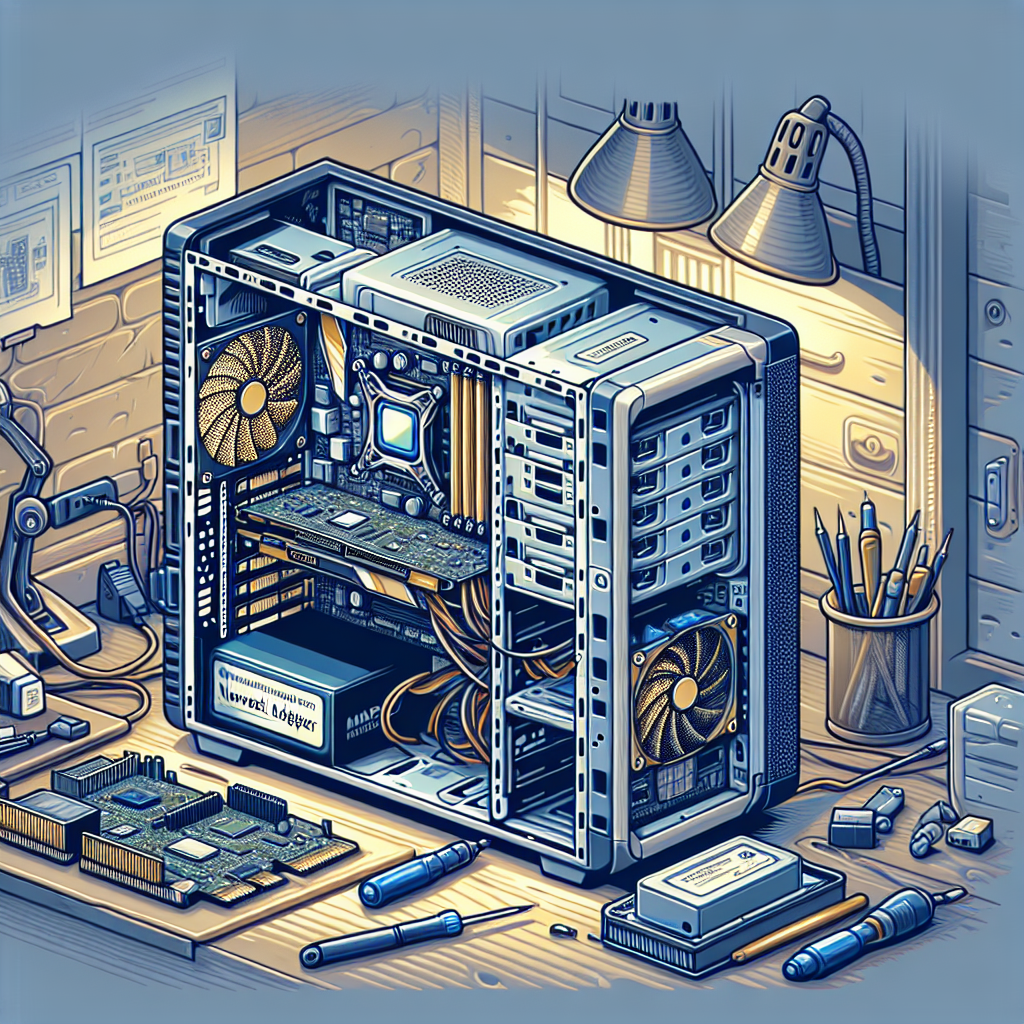Introduction
A hardware upgrade can significantly boost your computer’s performance, but it may sometimes result in unexpected issues, such as a non-functional network adapter. Network connectivity is crucial for both personal and professional tasks, making it essential to address any problems promptly. This article outlines the steps to fix a network adapter that is not working after a hardware upgrade.
Common Causes of Network Adapter Issues After a Hardware Upgrade
Understanding the potential causes of network adapter problems can help in troubleshooting. Here are some common reasons:
- Driver conflicts
- Incompatible hardware
- BIOS settings
- Physical connection issues
- Misconfigured network settings
Table: Common Causes and Solutions
| Cause | Solution |
|---|---|
| Driver conflicts | Update or reinstall network drivers |
| Incompatible hardware | Ensure hardware compatibility |
| BIOS settings | Check and update BIOS settings |
| Physical connection issues | Inspect and reconnect hardware |
| Misconfigured network settings | Reconfigure network settings |
Step-by-Step Guide to Fixing Network Adapter Issues
1. Check Physical Connections
Before delving into software solutions, verify that all physical connections are secure. This includes ensuring the network adapter is properly seated in its slot and all cables are firmly connected.
2. Update Network Drivers
Outdated or incompatible drivers are common culprits of network adapter problems. Follow these steps to update your drivers:
- Press Windows + X and select Device Manager.
- Expand the Network Adapters section.
- Right-click your network adapter and choose Update driver.
- Select Search automatically for updated driver software.
If the automatic update doesn’t work, visit the manufacturer’s website to download and install the latest drivers manually.
3. Check for Hardware Compatibility
Ensure that the new hardware is compatible with your system. Refer to your motherboard’s manual or the manufacturer’s website to verify compatibility.
4. Reset BIOS/UEFI Settings
The BIOS/UEFI settings can affect hardware functionality. Resetting these settings to their default state may resolve the issue:
- Restart your computer and press the designated key (usually F2, F10, DEL, or ESC) to enter the BIOS/UEFI setup.
- Find the option to reset settings to default. This may be labeled as Load Setup Defaults, Reset to Default, or something similar.
- Save and exit the BIOS/UEFI setup.
5. Reconfigure Network Settings
Incorrect network settings can also cause connectivity issues. To reset your network settings:
- Open Settings and navigate to Network & Internet.
- Select Status from the left sidebar.
- Click on Network reset and follow the prompts.
- Restart your computer.
6. Disable and Re-enable the Network Adapter
Sometimes, simply disabling and re-enabling the network adapter can fix issues:
- Open Device Manager again.
- Right-click on your network adapter and select Disable device.
- Wait a few seconds, right-click again, and select Enable device.
7. Run Network Troubleshooter
Windows provides a built-in network troubleshooter that can automatically find and fix common network problems:
- Go to Settings and select Update & Security.
- Click on Troubleshoot from the left sidebar.
- Select Network Adapter and click Run the troubleshooter.
Advanced Troubleshooting Techniques
1. Check for IRQ Conflicts
IRQ conflicts can interfere with hardware functionality. To check for conflicts:
- Open Device Manager.
- Go to View and select Resources by type.
- Expand Interrupt request (IRQ) and look for any conflicting devices.
2. Perform a System Restore
If the network adapter issue started after a hardware upgrade, a system restore might resolve the problem:
- Press Windows + S and type System Restore.
- Select Create a restore point.
- Click System Restore and follow the prompts to restore your system to a previous state.
3. Reinstall the Operating System
If all else fails, reinstalling your operating system might be the only solution. Ensure you back up your data before proceeding:
- Create a bootable USB drive with the OS installation files.
- Boot from the USB drive and follow the on-screen instructions.
Conclusion
Fixing a network adapter that is not working after a hardware upgrade involves a series of troubleshooting steps, from checking physical connections to advanced techniques like checking for IRQ conflicts or performing a system restore. By following the outlined steps, you should be able to restore your network connection and ensure smooth operation of your computer. If the issue persists, consulting with a professional technician may be necessary.

